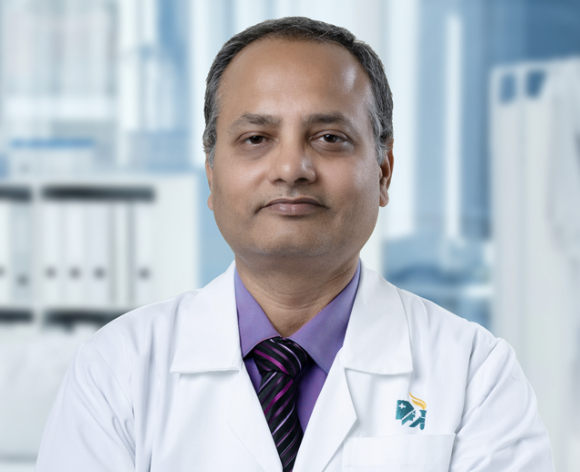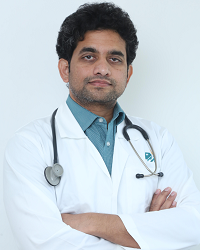Could not find what you are looking for?
- Diseases and Conditions
- Throat Cancer - Early Signs, Risk Factors, Diagnosis, and Treatment Explained
Throat Cancer - Early Signs, Risk Factors, Diagnosis, and Treatment Explained

Throat cancer is a general term for cancers that start in the pharynx (throat) or larynx (voice box). The pharynx includes the nasopharynx (behind the nose), oropharynx (tonsils, base of tongue, soft palate), and hypopharynx (lower throat). The larynx sits just below, housing the vocal cords. Most throat cancers start in the thin lining of the throat or voice box, called the mucosa. With early detection and modern, team‑based care, many people are cured while preserving speech, swallowing, and quality of life. This comprehensive article explains what throat cancer is, who is at risk, symptoms to watch for, how doctors diagnose and stage it, treatment options (surgery, chemotherapy, targeted therapy, immunotherapy, radiation, and proton therapy in select cases), prognosis, prevention at Apollo Hospitals.
Note: This guide is for education and does not replace medical advice. Personal care decisions should be made with a qualified head and neck oncology team.
Overview: What Is Throat Cancer and Why Early Detection Matters
Throat cancer develops when cells in the mucosa of the pharynx or larynx grow abnormally and evade the body's natural control mechanisms. The term covers several related cancers:
- Nasopharyngeal cancer (behind the nose)
- Oropharyngeal cancer (tonsils, base of tongue, soft palate)
- Hypopharyngeal cancer (lower throat around the voice box)
- Laryngeal cancer (voice box)
Why early detection matters:
- Early‑stage disease often requires less intensive treatment and offers higher cure rates.
- Prompt care preserves critical functions: voice, breathing, and swallowing.
- Identifying high‑risk causes, such as human papillomavirus (HPV)--related oropharyngeal cancer, guides tailored therapy and follow‑up.
How common is it?
- Throat cancers are among the more common head and neck cancers worldwide. Risk varies by region based on tobacco (smoked/smokeless), alcohol, and HPV exposure.
Types: Main Subtypes and Sites
Understanding where throat cancer begins helps tailor treatment.
Oropharyngeal cancer (tonsils, base of tongue, soft palate)
- Often linked to HPV (especially type 16); HPV‑positive cancers typically have a better outlook.
Laryngeal cancer (voice box)
- Strongly linked to tobacco and alcohol; early glottic cancers often present with hoarseness.
Hypopharyngeal cancer (lower throat)
- Frequently diagnosed at a later stage due to subtle early symptoms.
Nasopharyngeal cancer (behind the nose)
- Associated with Epstein--Barr virus (EBV) in many regions; highly sensitive to radiation and chemotherapy.
Most are squamous cell carcinomas, but rare salivary, lymphoid, or sarcoma subtypes can occur.
Causes: Known or Suspected Contributors
Tobacco (smoked and smokeless) and alcohol
- Major traditional risks; combined use multiplies the risk.
HPV (human papillomavirus)
- Drives many oropharyngeal cancers; HPV‑positive tumors generally respond well to treatment.
EBV (Epstein--Barr virus)
- Associated with nasopharyngeal cancer in endemic regions.
Occupational/environmental exposures
- Wood dusts, solvents, metal fumes, and secondhand smoke.
Chronic reflux (laryngopharyngeal reflux)
- Can contribute to chronic irritation in the larynx.
Immune status and genetic susceptibility
- Weakened immunity and certain inherited backgrounds can raise risk.
No single factor explains every case. Many people have a combination of risks.
Risk Factors: Lifestyle, Genetic, Environmental, and Medical
Lifestyle and habits
- Tobacco use (any form), heavy alcohol consumption, poor diet low in fruits/vegetables.
Viral exposure
- HPV (oropharynx), EBV (nasopharynx).
Work environment
- Long‑term exposure to dusts, chemical fumes, or metals without adequate protection.
Medical/biologic
- Chronic reflux, poor oral/dental health, weakened immune system.
Age and sex
- More common in adults over 50; historically more frequent in men, though all sexes are affected.
Reducing modifiable risks---especially quitting tobacco, limiting alcohol, using protective equipment at work, and keeping up with vaccines and dental care---lowers risk and improves outcomes.
What Are the Symptoms of Throat Cancer?
Symptoms depend on location and size. Any symptom that persists beyond 2--3 weeks deserves evaluation by an ENT/head and neck specialist.
Common early signs:
- A mouth or throat sore that doesn't heal
- Persistent hoarseness or voice change (especially for laryngeal cancers)
- One‑sided throat or ear pain (referred otalgia)
- Difficulty or pain when swallowing; sensation of food sticking
- A neck lump (enlarged lymph node)
- Persistent nasal blockage (one‑sided), nosebleeds (nasopharynx)
Additional or advanced symptoms:
- Chronic cough, coughing up blood
- Breathing noise (stridor) or shortness of breath
- Jaw tightness (trismus), facial numbness or pain
- Unexplained weight loss, fatigue
- Vision changes or double vision (nasopharynx/skull base involvement)
Persistent hoarseness, a neck lump, one‑sided throat or ear pain, or one‑sided nasal symptoms should be checked promptly.
How Is Throat Cancer Diagnosed?
Diagnosis confirms the cancer type and maps its extent to guide a safe, effective, function‑preserving plan.
Specialist examination
- Comprehensive head and neck exam; flexible nasopharyngolaryngoscopy to visualize the nasopharynx, oropharynx, hypopharynx, and larynx.
- Dental and oral health assessment to plan safe treatment.
Imaging
- MRI or contrast‑enhanced CT of head and neck to define tumor size, depth, cartilage or bone invasion, and lymph nodes.
- PET‑CT for metabolic mapping, nodal/distant spread, and radiation planning (commonly used in stage III--IV disease). This scan helps doctors see if the cancer has spread anywhere else in the body.
- Chest CT to evaluate lungs.
Biopsy and pathology
- Incisional biopsy or endoscopic biopsy of the primary tumor.
- Fine‑needle aspiration (FNA) of neck nodes.
- p16/HPV testing for oropharyngeal cancers; EBV testing for suspected nasopharyngeal cancer. Tests like p16 (HPV marker) and EBV testing are done not just for diagnosis, but also to guide treatment choices and prognosis.
- Pathology reports note grade and features like perineural or lymphovascular invasion.
Baseline function and supportive assessments
- Dental optimization before radiation (fluoride trays, extractions if needed).
- Speech/swallow and nutrition assessments; audiogram if cisplatin chemotherapy is planned (since cisplatin can affect hearing).
A multidisciplinary tumor board integrates findings to create a personalized treatment plan.
Staging and Grading: What They Mean
Staging uses the TNM system and is tailored to the specific throat site.
T (primary tumor)
- Size and local extent, including invasion into adjacent structures (cartilage, bone, tongue base, skull base).
N (regional lymph nodes)
- Number, size, laterality, and extranodal extension (spread outside the node).
M (distant metastasis)
- Presence/absence of spread to organs like lungs, liver, or bone.
Subsite nuances:
- Oropharyngeal cancers have separate staging groups for HPV‑positive disease because of better prognosis.
- Laryngeal staging considers vocal cord mobility, cartilage invasion, and airway involvement.
- Nasopharyngeal staging emphasizes skull base and cranial nerve involvement and retropharyngeal/neck nodes.
Why it matters:
- Stage and risk features determine whether surgery, radiation, chemotherapy, or combinations are best.
- Guide whether organ‑preserving approaches are feasible versus surgery‑first strategies.
Treatment Options for Throat Cancer
Treatment is individualized by subsite, stage, pathology, viral status (HPV/EBV), function (speech/swallow/airway), and overall health. A multidisciplinary team---head and neck surgeons, radiation oncologists, medical oncologists, radiologists, pathologists, dentists, speech/swallow therapists, dietitians, and rehabilitation specialists---coordinates care.
Surgery
Transoral approaches (TLM/TORS)
- Whenever possible, doctors use minimally invasive surgery (through the mouth) to avoid large cuts. Transoral laser microsurgery (TLM) or transoral robotic surgery (TORS) for select oropharyngeal and supraglottic lesions to remove tumors through the mouth with minimal incisions.
Open resections
- For larger or invasive tumors (e.g., partial/total laryngectomy, composite resections), often with microvascular free‑flap reconstruction to restore form and function.
Neck dissection
- Removes involved or at‑risk lymph nodes; tailored by subsite and stage.
Airway safety
- Tracheostomy may be needed temporarily or permanently, especially in advanced laryngeal/hypopharyngeal disease.
Salvage surgery
- Used when cancer recurs after chemoradiation or when primary organ preservation is not feasible.
Rehabilitation (voice, swallowing, and shoulder/neck function) begins early to maximize recovery.
Medical Treatment
Chemotherapy
- Concurrent with radiation (chemoradiation) for many stage III--IV cancers to improve local control and cure rates; cisplatin is commonly used.
- Sometimes chemotherapy is given first to shrink the tumor and make later treatment easier (induction chemotherapy).
Targeted therapy
- EGFR inhibitors may be used with radiation when cisplatin isn't suitable or in recurrent/metastatic settings.
Immunotherapy
- These treatments boost your own immune system to fight cancer cells. Immune checkpoint inhibitors are options for recurrent/metastatic disease not amenable to curative local therapy, guided by biomarkers and prior treatments.
Supportive care
- Symptom control (pain, mucositis), nutrition support (including temporary feeding tubes), hydration, anti‑nausea medications, and infection prevention.
- Smoking and alcohol cessation programs improve outcomes, reduce complications, and lower second cancer risk.
Radiation Therapy
Definitive chemoradiation
- A standard organ‑preserving option for many oropharyngeal, laryngeal, hypopharyngeal, and nasopharyngeal cancers.
Adjuvant radiation (± chemotherapy)
- After surgery for high‑risk features such as positive/close margins, extranodal extension, multiple nodes, perineural/lymphovascular invasion, cartilage or bone invasion.
Techniques
- Intensity‑modulated radiation therapy (IMRT/VMAT) with daily image guidance sculpts dose around the tumor and nodal areas while sparing salivary glands, spinal cord, swallowing muscles, jaw joints, and---when relevant---eyes/optic pathways.
Common side effects: throat soreness (mucositis), dry mouth, taste changes, skin redness, hoarseness, fatigue; long‑term risks include dry mouth, dental issues, thyroid dysfunction (neck irradiation), neck stiffness, and swallowing changes. Many side effects improve with time and Apollo provides specialized speech and swallowing therapy to help recovery. Proactive dental care, oral rinses, saliva support, pain control, and swallow therapy lessen impact.
Proton Therapy
Apollo offers Proton Therapy at our state-of-the-art Proton Cancer Centre in Chennai. This advanced form of radiation delivers energy directly to the tumor while avoiding nearby healthy tissues like the brainstem, spinal cord, and swallowing muscles. This means fewer long-term side effects and better quality of life in selected cases.
When considered
- Re‑irradiation after prior radiation.
- Nasopharyngeal cancers, skull base tumors, and cases where additional sparing of salivary glands and swallowing muscles is crucial.
- Tumors near critical structures (brainstem, spinal cord, optic pathways).
Suitability is individualized after comparative planning with advanced photon IMRT.
Prognosis: Survival, Function, and What Influences Outcomes
- HPV‑positive oropharyngeal cancers generally have better outcomes than HPV‑negative cancers at the same stage.
- With timely and complete treatment, many patients can expect long-term survival and good quality of life.
- Early detection, completion of planned treatment on time, and multidisciplinary supportive care improve survival and quality of life.
Key factors:
- Stage at diagnosis, nodal status, tumor volume.
- Viral status (HPV/EBV) and pathology risk features.
- Timely use of adjuvant therapy when indicated.
- Lifestyle changes (tobacco/alcohol cessation), nutrition, and early rehabilitation.
Many people regain understandable speech and safe swallowing; early, structured therapy is essential.
Screening and Prevention: Practical Steps
HPV vaccination
- Getting the HPV vaccine—especially for teenagers and young adults—can prevent certain types of throat cancer later in life.
Tobacco and alcohol cessation
- The most impactful steps to reduce risk and improve treatment tolerance and outcomes.
Oral and dental health
- Regular dental care and optimization before radiation.
Occupational protection
- Use respirators and ensure ventilation in dusty or chemical workplaces.
Prompt evaluation
- Any mouth sore, hoarseness, one‑sided throat/ear pain, swallowing difficulty, neck lump, or one‑sided nasal symptoms lasting >2--3 weeks should be checked.
For International Patients: Seamless Access and Support at Apollo
Apollo Hospitals provides coordinated, end‑to‑end services for throat cancer care:
- Pre‑arrival medical review for a preliminary opinion and planning
- Priority scheduling with head and neck surgery, radiation oncology (IMRT/IGRT and proton therapy evaluation at our Chennai Proton Cancer Centre when appropriate), medical oncology, dental medicine, speech/swallow therapy, nutrition, and rehabilitation
- Travel support: medical visa invitations, airport pickup on request, accommodation guidance, and local transport assistance
- Language and cultural support: interpreters, patient navigators, and clear written care plans
- Financial counseling: transparent estimates, package options when feasible, insurance coordination, and assistance with international payments
- Continuity of care: detailed discharge summaries, digital sharing of imaging/pathology, survivorship plans, and teleconsultations with home‑country clinicians
Recovery, Side Effects, and Follow‑Up: What to Expect
During chemoradiation
- Expect throat soreness, dry mouth, taste change, fatigue, and weight loss risk; proactive oral care, analgesics, anti‑nausea medicines, and nutrition support (including temporary feeding tubes) help avoid treatment breaks.
After surgery
- Hospital stay varies by procedure; pain control, early mobilization, wound care, and targeted therapy (voice/swallow) start early.
- After total laryngectomy, voice rehabilitation via tracheoesophageal prosthesis can provide fluent, natural‑sounding speech.
Long‑term rehabilitation
- Speech and swallow therapy, jaw/neck physiotherapy, lymphedema care, and thyroid monitoring (when the neck is irradiated).
- Lifelong dental care with fluoride trays reduces dental complications.
Follow‑up schedule
- Typically every 1--3 months in year 1, every 2--4 months in year 2, every 4--6 months through year 5, then annually.
- Regular follow-up is not just to check for recurrence, but also to help with nutrition, speech, and mental well-being. Visits include endoscopic checks, imaging as indicated, dental and nutrition reviews, speech/swallow assessments, and cessation support.
Frequently Asked Questions (FAQs)
Is throat cancer curable?
Yes. Many early‑stage cases are cured, and even advanced cases can be cured with modern chemoradiation or surgery‑based approaches. HPV‑positive oropharyngeal cancers, in particular, have excellent outcomes with appropriate treatment.
What are early warning signs of throat cancer?
Hoarseness lasting more than two weeks, a neck lump, one‑sided throat or ear pain, difficulty swallowing, or one‑sided nasal blockage/bleeding. Any of these persisting beyond 2--3 weeks should be evaluated.
How is throat cancer treated?
Treatment depends on site and stage. Options include organ‑preserving chemoradiation, transoral minimally invasive surgery, open resections with reconstruction, and combinations of these. Targeted therapy and immunotherapy are used in specific scenarios.
Will I lose my voice or have trouble swallowing?
Many people keep good voice and swallowing with organ‑preserving strategies and early rehabilitation. When total laryngectomy is necessary, tracheoesophageal voice prostheses can restore fluent speech. Swallow therapy helps maintain or restore safe eating.
What side effects should I expect?
Short‑term: throat soreness, dry mouth, taste changes, skin redness, fatigue, temporary swallowing difficulty. Long‑term: dry mouth, thyroid dysfunction, dental sensitivity, neck stiffness, and sometimes persistent hoarseness. Most effects are manageable with preventive and supportive care.
Can throat cancer come back (recurrence)?
It can. Close follow‑up detects problems early. Options include salvage surgery, re‑irradiation (carefully selected, sometimes with proton therapy), systemic therapy, and symptom‑directed care.
How long is recovery time?
Transoral procedures: days to a few weeks. Chemoradiation: side effects peak near the end and improve over 4--8 weeks, with continued gains over months. Major surgeries require longer recovery and structured rehabilitation.
Next Steps
- Arrange an ENT/head and neck oncology evaluation for persistent hoarseness, one‑sided throat or ear pain, swallowing difficulty, a neck lump, or unilateral nasal blockage/bleeding.
- Bring prior imaging, biopsy reports, dental records, medication lists, and relevant medical history.
- Ask about organ‑preserving options, whether chemoradiation or surgery is best in your case, dental protection before radiation, voice/swallow rehabilitation, expected timelines, and a personalized follow‑up plan.
- Seek support for quitting tobacco and reducing alcohol---two of the most powerful steps to improve treatment outcomes and overall health.
With early recognition, precise imaging, expert surgery and radiation, evidence‑based systemic therapies, and comprehensive rehabilitation, many people with throat cancer achieve cure or durable control while maintaining strong quality of life. A compassionate, experienced multidisciplinary team---focused on cure, function, and long‑term wellness---makes all the difference.











